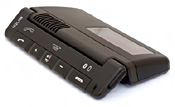|
| Don’t forget the ACCESSORIES!
 | |
|
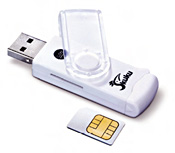 | |
| |
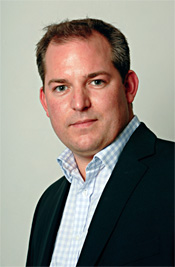 | |
| Jeremy Newing, head of mobile marketing at LG
|
| Rising sales of mobile phones globally are in turn driving the mobile accessories market. Worldwide sales of mobile phones reached close to 305 million units in the second quarter of 2008, an 11.8% increase over the second quarter of 2007, according to Gartner. ABI Research expects the market for mobile phone accessories to grow steadily in the next five years and generate over $80 billion in revenues in 2012. In the UK, O2 currently sees the value of the mobile accessories market at around £135 million per year. Heather McLean takes a look at the lucrative world of accessorising…
John Willoughby, commercial manager at Frequency Telecom Accessories, says over the last year, volumes of accessory sales have risen by around 10%, but actual values are down. “This is due to prices being driven down by supermarket competition,” he explains. “The supermarkets directly source large volumes of cheap product and sell at competitive prices. Whilst this may be good for the consumer, the high level of fault and limited lifespan that occurs with these products affects the credibility of mobile accessories in general.”
Yet the potential for the accessories market is huge, states Francois Mahieu, devices director at Orange UK: “It is a strong business for Orange, with new and exciting products for consumer and businesses emerging all the time. With the rise of flexible working, products such as chargers that enable customers to maintain power in their devices and, hence, always be connected, continue to do well.”
Jeremy Newing, head of mobile marketing at LG, agrees the accessories market in general has seen massive growth over the past few years. He claims LG is currently expanding its product line in accessories to enhance its mobile offering. “As mobile handsets are coming equipped with more and more features, there will inevitably be more accessories to enhance them so the market growth potential is clear to all. We have an exciting and innovative product range lined up and are looking forward to becoming more prominent in this arena.”
|
| |
Handsets are now used for more than just calls and text messages; they are used for pictures, photos, videos, music, downloading films and searching or networking on the internet, Heather Cox, accessories portfolio manager at O2 UK, states. “All these additional functions have fuelled the growth in related accessories such as music speakers, memory cards and data cables. Global trends such as an increase in the awareness of our environment and the impact we have on it have fuelled demand for low power consuming chargers, solar powered products and environmental packaging. In addition, legislation and awareness of the risks of holding a handset whilst driving has fuelled the demand for installed and visor car kits.” | |
| |
| Hello Bluetooth
|
| |
| “Business users’ demand on Bluetooth headsets continues, with these being the most popular accessory for this group, enabling them to type using both hands on a PC or laptop while on a call or make notes during an important business call,” Cox adds.
Chris Burrett, sales and marketing director at LBS Accessories, a developer and distributor of technology for the mobile lifestyle, states that Bluetooth appears to be finally coming of age. He comments: “I’d expect more
 | |
|
| development in accessories that take advantage of that functionality. There’s still a great deal of room for growth in the Bluetooth headset market judging by the number of people you still see driving whilst using their mobile phones.
“The market for hands free speakerphones should begin to develop as a cheaper and less intrusive alternative to fitting car kits, or having to stick a device in your ear,” he adds. “Already there are products out in the market from Parrot, Motorola and Celleden that can clip on to your car’s sun visor, and there are models beginning to appear from other manufacturers that clip over the rear view mirror.”
While Stuart Bruce, head of sales for western Europe at Nokia Original Accessories, comments: “Many of our products are sold as a complete telephony solution alongside devices. Companies now have an obligation to keep their employees safe and legal in terms of their in car solution and to promote efficient ways of working. Accessories have a pivotal role to play in this.”
|
| |
| Increase your memory
|
| |
| Consumers want to increase the size of the data available to access on their mobile, says Cox. With handsets being used as MP3 players, cameras and general storage devices, memory cards are a very popular purchase because of this, she explains. “We also see a large number of Bluetooth headsets being purchased and this is clearly linked to a user’s busy lifestyle and requirement to multi task. In addition, we have seen spare mains and in-car chargers prove popular, as well as protective cases for a whole range of devices. Consumers’ demand for music on the move has seen a growing demand for music speakers and we expect to see this growth continue,” she continued.
One trend George McPherson, CEO at Data Select, has spotted in the market is the move from fashion accessories to utility. He comments: “The move away from fashion accessories, with the exception being socks, has been quite marked and the emphasis has shifted to utility. Data Select is getting a lot of interest in greener power-saving accessories and I think this trend will continue. The more sophisticated devices become, the more people require accessories to fully experience, and power, their device. The increased use of the phone has a direct correlation with the increase of accessory sales.”
Traditionally, the most popular accessories for both consumers and
 | |
|
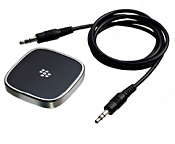 | |
| |
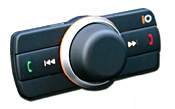 |
|
businesses were those products associated with power on the move, says Mahieu. “Nowadays however, customers think of their mobile phones as an essential item for everyday life. So, whilst products which ensure connectivity and power still prove to be popular, the Orange range of accessories has developed to incorporate products such as memory cards and speakers to match the ever increasing consumer demand.” | |
| |
| Market drivers
|
| |
| There are two areas that drive accessories purchases, states Newing. One is an essentials or distress purchase, which he says are still the most popular self select categories for items such as chargers and replacements. The second is driven by recent legislation, which has been a key factor in positioning in-car solutions as the most popular accessories for business users.
The increasing debate around climate change has been one of the key drivers in the growing trend of solar powered Bluetooth car kits, Newing comments. “The mobile industry realises that it has a responsibility when it comes to its own carbon footprint and green accessories such as the LG HFB-500, which are becoming increasingly more popular.”
Agreeing, Mahieu states: “The desire from customers to be more ‘green’ is paving the way for innovative products. Businesses are increasingly recognising the importance of ensuring they are environmentally conscious and, thus, are asking for products which are more energy efficient. Orange was actually the first operator to market the world’s first solar powered Bluetooth headset, the Iqua Sun. Similar accessories are expected to follow suit, including solar powered Bluetooth car kits, for example.”
 | |
|
 | |
| Francois Mahieu, devices director at Orange UK
|
| |
| Making a margin
|
| Chargers and Bluetooth headsets make the best margin for the dealer on a percentage basis, comments McPherson. “At Data Select we are trying very hard to increase the quality of the dealer sales proposition by promoting manufacturer original accessories, and trying to show that consumers are happy to pay a premium for branded product. That said, as many accessories are distress purchases, power being an example, holding a universal product such as Data Select’s Kit4 range is a simpler proposition for dealers to stock.”
On margin, Newing adds: “Distress products like chargers are always the easiest to sell. Legislation has made accessories like hands free kits essential purchasing for consumers. Bluetooth car kits have seen a significant increase over the last few years. Road safety campaigns and new government legislation have both played a major role in driving this trend, and long may it continue in our eyes.”
|
| |
| How to sell
|
| |
| Accessories offer the opportunity to give customers the full solution to help them enhance the use and functionality of their handsets, comments Cox. By offering the customer all the accessories they need to make the most of their handset, the operator, manufacturer and dealer all gain more loyalty and increase customer satisfaction, she says, adding that accessories also offer the opportunity for a profitable revenue source.
Bruce adds: “Many companies are looking for a one stop shop. In order to provide this, the dealer will need to have a good level of understanding of both their customers total requirements, and the range of products and services that are available from manufacturers such as Nokia.”
Willoughby believes the key to selling accessories is to sell them on the back of a handset sale. If a customer has purchased a new mobile, they will want to protect it and extend its use, he says. Accessories such as mobile phone covers will help extend the life of the phone. “Business users can often claim the cost of accessories back from their companies, so buying accessories won’t come out of their own pocket but adds benefit to their use of the phone.”
Most consumers have little idea of the accessories available to them so dealers should present the benefits of accessories and explain how particular features can enhance the user experience, states Willoughby. “Many dealers miss a trick by focusing on the commission they will make on getting a connection, but forget about the opportunities to make extra profit from accessories, either during the time of sale, or from an existing customer.”
McPherson agrees a trick is being missed in the dealer channel: “Accessories are sold as an add-on to the handset, and I’m sure there are opportunities lost due to the focus being on the handset and the contract. If B2B has enough scale, it might be worth them looking at a dedicated accessory specialist to sell into their customer base.”
Undoubtedly the handset can stimulate sales, but it can work the other way too, says Willoughby. He comments that a direct marketing telesales campaign to sell accessories can not only provide a good reason to call the customer but also provide an opportunity to discuss current contract and handset arrangements, thereby increasing the likelihood of the loyalty of the customer to a particular network.
Into the future
As for the next 12 months, Cox lays out her predictions: “I see suppliers focusing their investment on innovation in environmentallyfriendly products and packaging. I am also seeing innovation in finishes and designs in the Bluetooth area as suppliers look to create products that are more comfortable, have better sound quality and are more discreet. I also expect to see higher capacities in the memory card space so users can store more films, music and high resolution photos on their mobile phone. Following the success iPod accessory suppliers have had, I expect to see more accessories coming through which enhance the use of the Apple iPhone.”
The popularity and growth of listening to music on the mobile will bring with it further innovations in speakers and headsets for mobiles phones, says Newing. This is not necessarily restricted to Bluetooth he adds, as the next technology is always just around the corner. “With mobile phones now containing so many features, such as high spec cameras, music players and GPS, there is plenty more scope for innovative accessories to accompany these features and we hope to be at the forefront of this innovation.”
Willoughby states that new developments in wireless technology such as near field communications (NFC) and wire-free charging systems will drive new forms of accessories in the next two years. “NFC has been used predominantly for mobile commerce with the most obvious example being the Oyster Card, he says. “Handsets are now being developed that include NFC and this will push the mobile wallet concept further forward and stimulate new accessory development.”
Additionally, Willoughby believes that wire-free charging of electronic appliances will also become very popular. “Through magnetic induction, products and accessories can be charged by being placed in close proximity with a charging base, which means that one charger can work with different appliances. This will make existing wired chargers redundant, but consumers will need to invest in accessories that are compatible with the wire-free technology.”
Being environmentally friendly and reducing the cost of energy will extend into mobile phones and accessories too. “Currently mobiles use up a lot of energy through battery charging, but as the technology improves, solar power in particular will be used to power and recharge handsets and accessories,” predicts Willoughby. “Solar powered chargers, headsets and car kits are available now, but there is little consumer awareness.”
What will be interesting to see is how the consumer adapts to the proliferation
 | |
|
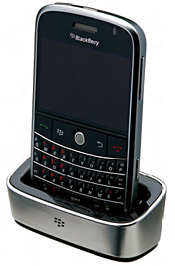 | |
| |
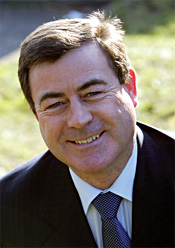 | |
| George McPherson, CEO at Data Select
|
| |
 | |
| Heather Cox, accessories portfolio manager at O2 UK
|
| |
 | |
| John Willoughby, commercial manager at Frequency Telecom Accessories
|
of devices with overlapping functionality, states Burrett. “Already my sat nav can play music and act as a hands free speakerphone; there are car stereos with sat nav and phone capabilities and, of course, handsets that can do all three too.” | |
| |
| Ed says:
The accessories market is alive and kicking, so make sure you are paying due attention to this excellent source of revenue.
|
|



